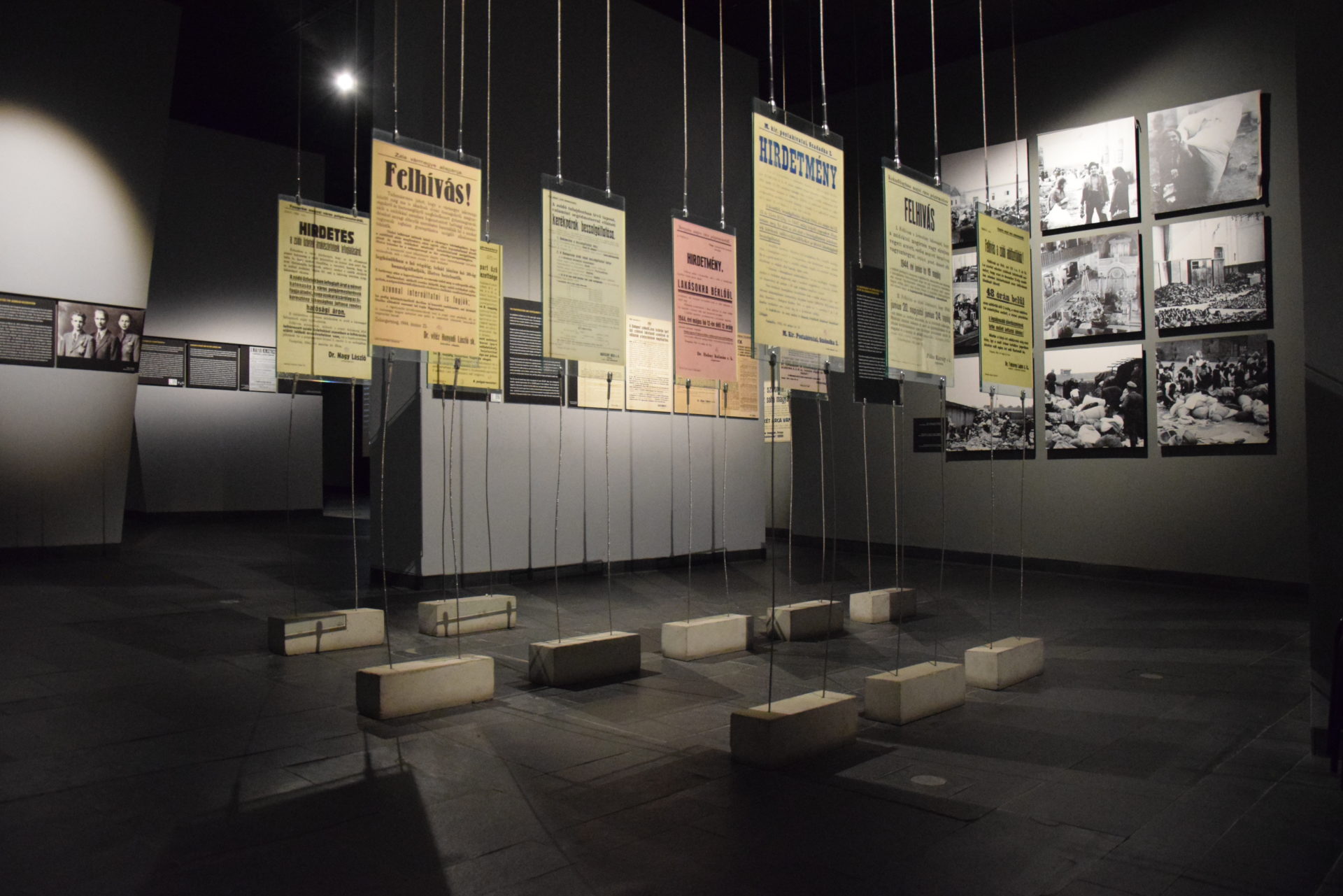
To the Memory of the Victims of the Hungarian Holocaust
The theme of the permanent exhibition is the Holocaust in Hungary. Its aim is to present and describe the persecution, suffering and murdering of Hungarian citizens, Jews and Roma, doomed to be exterminated on the basis of a racist ideology. The leading idea of the exhibition is to shed light on the relation between the state and the citizen. As of 1938, the Hungarian state has gradually deprived a group of its citizens of some basic human rights: of their property, freedom, human dignity, and eventually, of their lives. This process has dramatically accelerated in 1944, after the German occupation of the country. In the line of this concept, the exhibition doesn’t provide a chronological description of the events; rather it is consisted of thematic blocs revealing distinct phases of persecution (deprivation of rights, despoilment, deprivation of freedom, of human dignity, of life). These elements are framed by the contents of the opening and closing halls. The former gives an introduction of the pre-war lives of the Jewry and Roma population in Hungary, the later opens the questions of the liberation and calling to responsibility.
One of the central motifs of the thematic blocs is a series of real individual and family stories, displayed continuously on the wall encircling the whole exhibition. As we reach the last hall, the lines on the wall symbolizing lives run out, the personal items disappear; yet we hear faintly wedding music filtering through from the front room, reminding us on the period prior to destruction. From here, the path leads to the area of mourning and remembrance, the synagogue. At this space, memories on destroyed synagogues and prayer rooms are evoked by photographs, of murdered people by portraits of randomly selected individuals on fragile glass benches. Part of the space is devoted to rescuers, courageous foreign diplomats and Hungarian citizens, whose stories illustrates that even in the darkest period of persecution, hundreds risked their own lives to help others.
At each thematically defined unit of the exhibition, multimedia illustrations on touch-screens are available for the visitors, including archive photos, movies, contemporary documents and additional explanations of the particular theme.
Venue of the exhibition
The permanent exhibition is situated on 1,500 sq. meters at the basement of the Memorial Center and in the Synagogue. Photos>>
The exhibition has been arranged by the Hungarian National Museum.
Historians, museologists:
Katalin Jalsovszky – Historian-museologists
László Karsai– Historian
Gábor Kádár – Historian
Péter Szuhay– Roma researcher
Zsuzsanna Toronyi – Museologist
János Varga – Visual research expert
Zoltán Vági – Historian
Exhibition arrangement organized and managed by:
Judit Molnár– Historian Director
of the Pava Street Permanent Exhibition Program Office of the Hungarian National Museum
Arrangement of the exhibition supervised by:
László Harsányi – Ministerial Commissioner, Chair of the National Cultural ProgramKovács Tibor– Director General of the Hungarian National Museum
Ferenc Szikossy – Deputy Director General of the Hungarian National Museum
Expert Reviewers:
István Deák – Historian
Mónika Kovács – Social psychologist:Mária Ormos– Historian
Ilona Radnóti – Chief museologists
Sándor Radnóti – Esthete
Krisztián Ungváry – Historian
Construction:
Trifolium Hungary Kft.
Design by:
Sarolta Bihary
Mariann Derencsér
Csaba Orbán
Zsolt Vasáros
Grafics:
Judit Gelencsér
Movies:
Polaris Filmgyártó és Forgalmazó Kft.
Csaba Antók
IT:
2KAL Informatikai és Szolgáltató Bt.